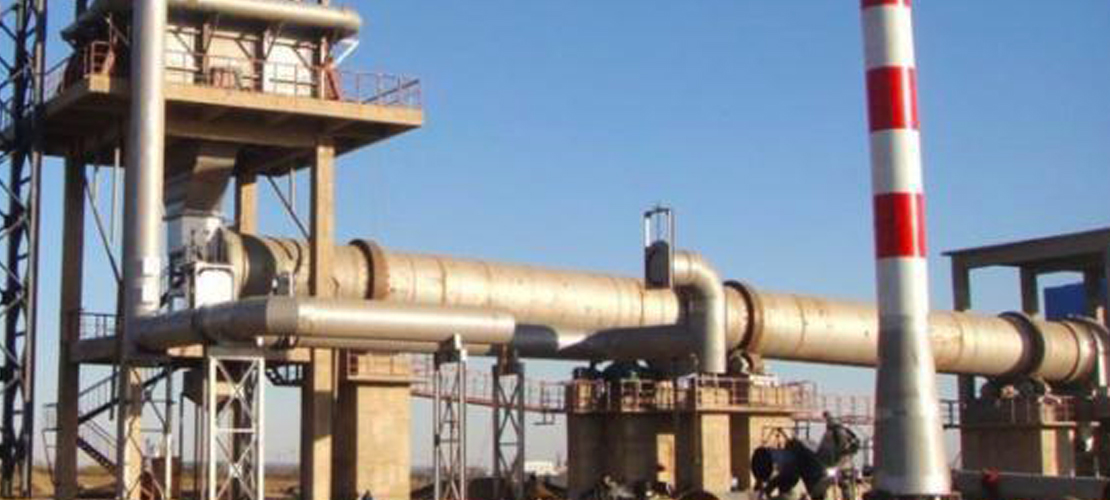Oct. 23, 2025

The Rotary Kiln Submerged Arc Furnace (RKEF) process is a pyrometallurgical process used to produce ferronickel, primarily for processing laterite nickel ore. The process includes raw material drying and crushing, pre-reduction in a rotary kiln, and high-temperature smelting in the submerged arc furnaces. In the SAF melting furnaces, electric arc smelting separates crude ferronickel and electric furnace slag, generating reducing gas (primarily CO). This gas is purified and returned to the rotary kiln for combustion as fuel, providing the kiln's heat.
Roasted Kiln Furnace (RKEF) Process Flowchart Overview:
Raw Material Yard → Screening, Crushing, and Mixing → Rotary Kiln → Submerged Arc Furnace → Iron Ladle Desulfurization → Refining in a Converter → Casting.
The laterite nickel ore, limestone, and reducing agent are screened and crushed in the raw material yard and material preparation room before being mixed and fed to the rotary kiln. In the rotary kiln, the raw materials are dried, roasted, and pre-reduced to produce nickel slag at approximately 1000°C.
The kiln flue gas is then discharged through a waste heat boiler, dust removal, and desulfurization. The dust is then mixed with the raw materials and re-entered the kiln.
1) Wide raw material adaptability.
It can handle magnesia-silicate ores, limonite-type nickel oxide ores with an iron content of up to 30%, and intermediate ores. It is most suitable for high-magnesium, low-iron nickel oxide ores that are difficult to process using wet processes.
2) High-grade ferronickel and low in harmful elements.
For the same ore, the RKEF process produces higher-grade ferronickel than other processes.
3) Environmentally friendly, with solid waste recycling.
The entire process, from the moment the moisture-containing charge enters the rotary kiln to the moment the iron and slag are tapped from the submerged arc furnace, is fully enclosed.
The raw materials are relatively moisture-rich, so dust is not generated during the material yard, screening, crushing, and transportation process.
The flue gas undergoes desulfurization to meet environmental protection requirements.
The dust from the rotary kiln and submerged arc furnaces is returned to the material yard.
The coal gas from the SAF furnaces is dedusted and then fed to the rotary kiln for fuel. The slag is then quenched and used as raw material for the construction industry.
4) High energy conservation & utilization.
The roasted sand produced by the rotary kiln is fed into the melting furnaces at a high temperature exceeding 800°C. Compared to cold charge, this saves a significant amount of physical and chemical heat, significantly reduces electricity and reducing agent consumption, and improves production efficiency. The waste heat from the rotary kiln flue gas can be recovered as steam for power generation.
The above is a brief introduction to rotary kiln submerged arc furnace. If you have any requirements for smelting nickel ore, iron ore, or other materials, please feel free to contact us at Sanrui Electric Furnace. We offer melting furnaces and turnkey projects for SAF, EAF, IF, LRD, VD, and VOD.
Previous: None
Next: What are the Advantages of the Molten Oxygen Combined Operation Method?
Latest News
Features & Principles of Ferrosilicon Production Electric Arc Furnace
Oct. 27, 2025
Rotary Kiln Submerged Arc Furnace
Oct. 23, 2025
Latest Products
Customized metallurgical machinery and equipment range: Electric Arc Furnace, Submerged Arc Furnace, LF Refining Furnace, Vacuum Furnace, Induction Furnace, Dust Remove System, Water Treatment Equipment, etc. Providing the most advanced equipment integration services, metallurgical equipment can be customized according to different needs of customers, and production capacity can be adjusted according to customer requirements.
Electric Arc Furnace
Submerged Arc Furnace
LF Refining Furnace
VD / VOD Vacuum Refining Furnace
Induction Furnace
Furnace Accessories
Navigation
E-mail: anna@srfurnace.com
Tel: +86 159 2955 5868
WhatsApp: +86 159 2955 5868
Add:
Room 422, 4th Floor, Building D, No. 5, Phase I, Fengdong Free Trade Industrial Park, Xixian New District, Shaanxi Province
